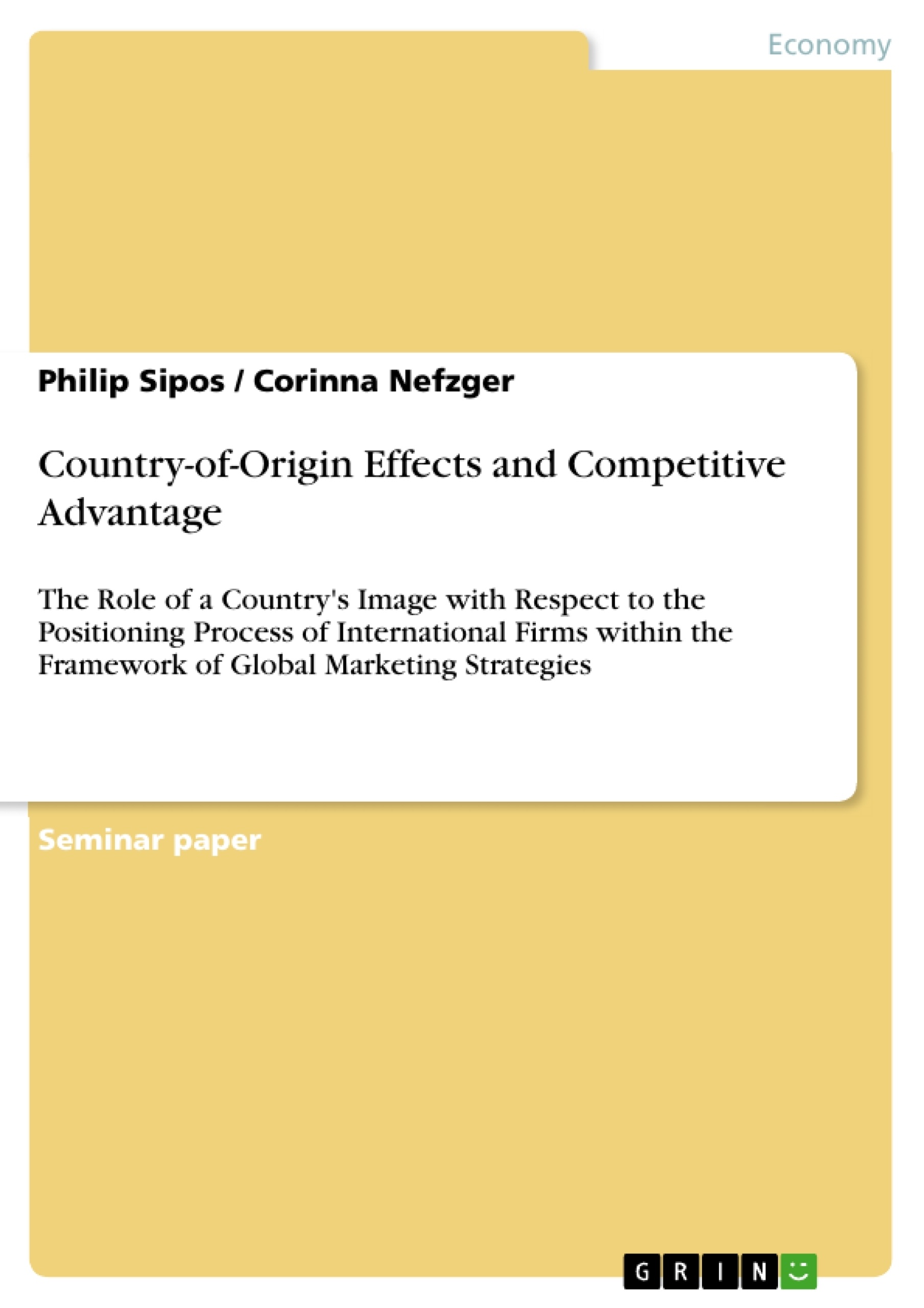Im Rahmen dieser Arbeit werden Country-of-Origin und Country Image Effekte mit der Zielsetzung, Implikationen für internationale Marketingstrategien abzuleiten, untersucht. Hierfür werden zunächst Konzeptualisierung und Operationalsierung der betreffenden Konstrukte auf Basis einer fundierten Literaturanalyse die vorgenom-men. Im Weiteren wird der Einfluss des Country-of-Origin wie auch des Coun-try Image auf das Konsumentenverhalten untersucht. Dazu wird neben konventionellen Ansätzen wie Kategorisierung und Ethnozentrismus eine neue, ergänzende Sicht-weise beleuchtet. Insofern lässt sich abschließend die Relevanz des Länderimage für internationale Marketingstrategien aufzeigen, da es sich weiterhin um ein breit diskutiertes Konstrukt handelt, welches künftiger Forschungsaktivitäten bedarf.
This paper analyses the concept of Country-of-Origin and Country Image with the purpose of highlighting implications for international marketing strategies. This is done by presenting an overview of the conceptual background of the two concepts, their influence on consumer behaviour as well as by discussing an integrative framework for their conceptualisation and operationalisation. After emphasising that these concepts indeed have an impact on product evaluations, their relevance for international marketing strategies is assessed. Conventional approaches such as categorisation and ethnocentrism that tend to bias Country-of-Origin effects will be complemented by a brand-new one. Thus, it is argued that Country Image is still a disputed issue and that there is need for further research on this construct.
Inhaltsverzeichnis (Table of Contents)
- 1. Introduction
- 2. Literature Review and Conceptual Background
- 2.1 Differentiation of Country-of-Origin and Country Image
- 2.2 Impacts of Country-of-Origin on Product Evaluations
- 2.3 Conceptualisation and Operationalisation of Country Image: The Three Component View
- 3. Implications of Country-of-Origin Effects for Global Marketing Strategies
- 3.1 Implementation of Country-of-Origin as a Competitive Advantage
- 3.2 Categorisation Problem: Effects of Country-of-Origin Misperception
- 3.3 Country-of-Origin Implementation Difficulties due to Ethnocentrism
- 3.4 New Approaches and their Impact on Country-Labelling
- 4. Managerial Implications and Conclusion
- 5. Recommendations and Future Research
Zielsetzung und Themenschwerpunkte (Objectives and Key Themes)
This paper aims to analyze the concepts of Country-of-Origin and Country Image and their implications for international marketing strategies. The authors present a conceptual framework for these constructs and discuss their influence on consumer behavior. The focus is on understanding how Country-of-Origin and Country Image impact product evaluations and how these factors can be leveraged in global marketing strategies.
- Country-of-Origin and Country Image as Marketing Strategies
- Impact of Country-of-Origin on Consumer Behavior
- Conceptualization and Operationalization of Country Image
- Implications of Country-of-Origin for Global Marketing
- New Approaches to Country Image
Zusammenfassung der Kapitel (Chapter Summaries)
The paper begins with an introduction to the concepts of Country-of-Origin and Country Image, outlining the importance of these constructs in the context of international marketing. Chapter 2 delves into the literature review and conceptual background, providing a detailed analysis of these concepts and their impact on product evaluations. The chapter also explores various approaches to operationalizing Country Image, such as categorisation and ethnocentrism.
Chapter 3 focuses on the practical implications of Country-of-Origin effects for global marketing strategies. The authors discuss strategies for leveraging Country-of-Origin as a competitive advantage and address challenges arising from categorisation issues and ethnocentrism. This chapter also introduces new approaches to Country Image and their potential influence on product labelling.
Schlüsselwörter (Keywords)
The paper explores the key concepts of Country-of-Origin, Country Image, consumer behavior, international marketing, global marketing strategies, product evaluations, categorisation, ethnocentrism, and brand-new approaches to Country Image.
- Quote paper
- B.Sc. Philip Sipos (Author), Corinna Nefzger (Author), 2011, Country-of-Origin Effects and Competitive Advantage, Munich, GRIN Verlag, https://www.grin.com/document/178713



